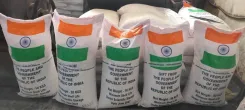How Did Indian Medical Device Exports Surge by 88% in Six Years?

Synopsis
Key Takeaways
- 88% increase in medical device exports over six years.
- Exports grew from $2,138 million to $4,014 million.
- India exports to over 170 countries.
- Advanced devices like MRI and defibrillators are now manufactured in India.
- Government initiatives are fostering a globally competitive medical device sector.
New Delhi, July 26 (NationPress) Fueled by government initiatives, the export of medical devices has surged by 88% over the past six fiscal years, as stated by Anupriya Patel, Union Minister of State for Health and Family Welfare, during the ongoing Monsoon session in Parliament.
In a written reply to the Lok Sabha, Patel revealed that various government programs have significantly boosted domestic manufacturing in this sector, allowing it to flourish as a sunrise industry.
"In the last six financial years, medical device exports increased from $2,138 million in FY2018-19 to $4,014 million in FY2024-25," Patel remarked.
She also noted that India is exporting medical devices to over 170 countries.
Patel highlighted that a range of advanced medical equipment, including Linear Accelerators (LINACs), cobalt machines for cancer treatment, Magnetic Resonance Imaging (MRI), computed tomography (CT) scans, mammography, and ultrasound machines, along with stents, defibrillators, and more, are now manufactured in India.
To enhance domestic production of medical devices, the Department of Pharmaceuticals has introduced several schemes, including the PLI Scheme for Promoting Domestic Manufacturing of Medical Devices, the Scheme for Promotion of Medical Devices Parks, and the Scheme for Strengthening the Medical Device Industry.
“Thanks to these initiatives, the Indian medical device sector has emerged as a rapidly growing and globally competitive industry,” Patel remarked.
Additionally, Patel mentioned that various schemes have also led to a 92% increase in India's exports of drugs and pharmaceuticals.
Exports rose from Rs 1,28,028 crore in FY2018-19 to Rs 2,45,962 crore in FY2024-25, Patel informed Parliament.
These initiatives encompass the Promotion of Research and Innovation in Pharma MedTech Sector (PRIP), the Production Linked Incentive (PLI) Scheme for Pharmaceuticals, the PLI Scheme for Bulk Drugs, the Scheme for Promotion of Bulk Drug Parks, and the Strengthening of the Pharmaceutical Industry scheme.









